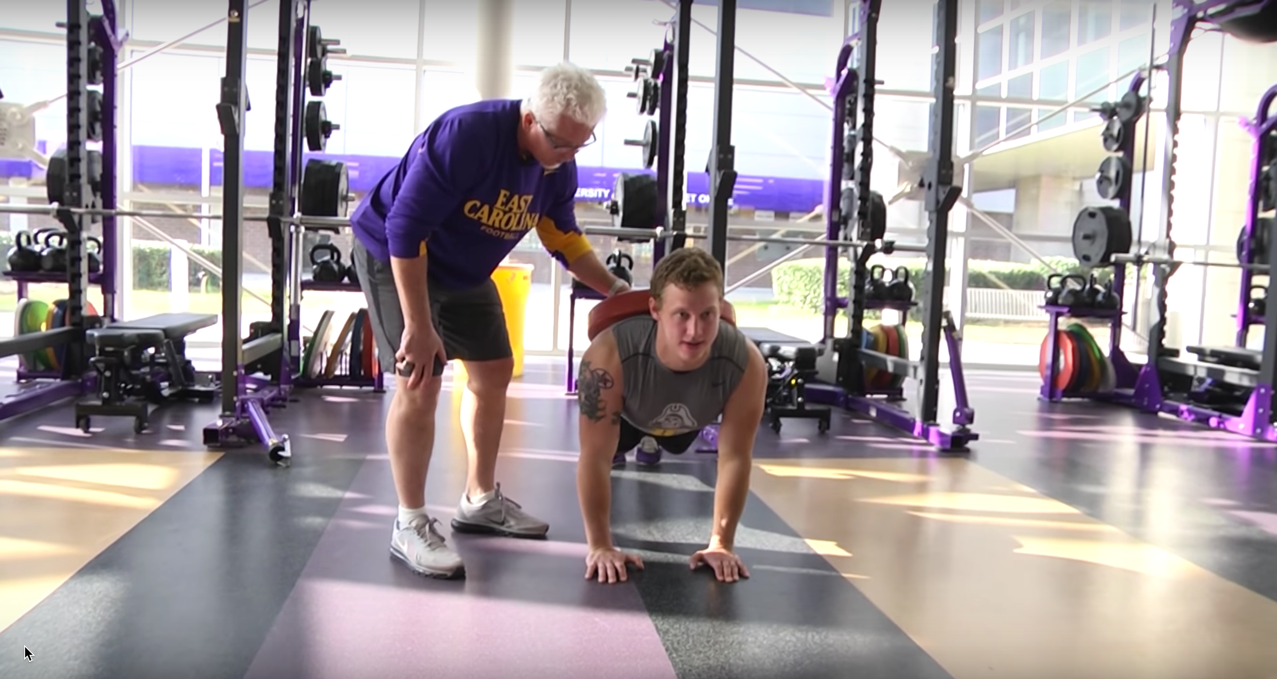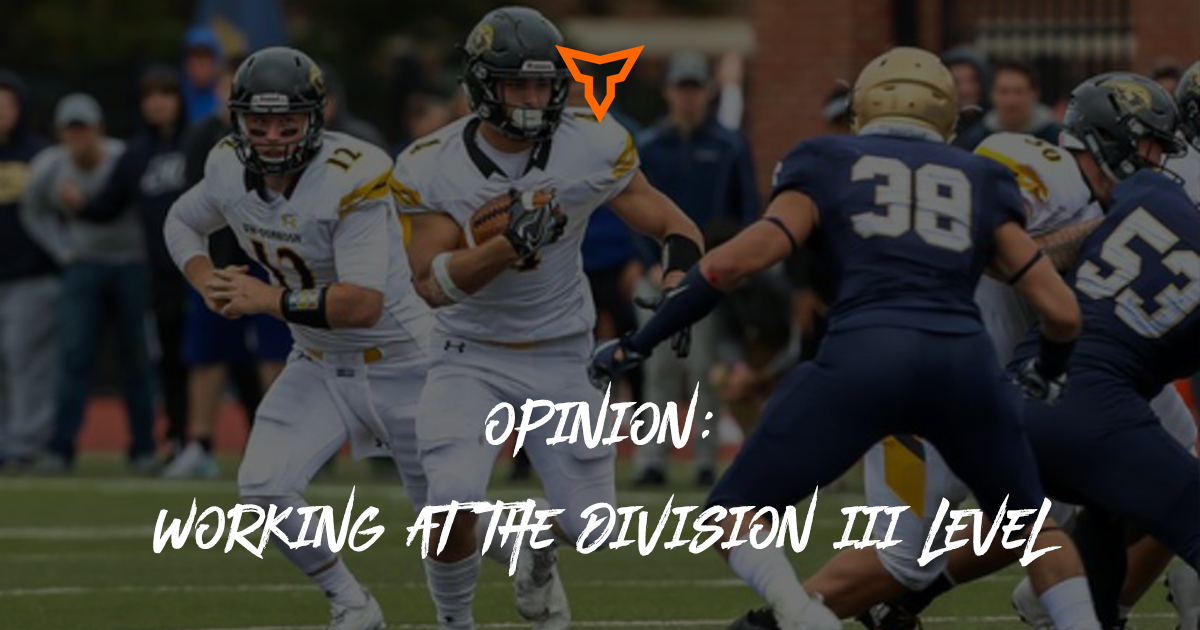Athletics, Inc.? : The Paradigm Shift in Strength and Conditioning
Athletics has been undergoing a major cultural shift for some time. Strength and conditioning has changed in a big way, too. The days that exercise was used as punishment are mostly gone. The education and training requirements for strength and conditioning professionals are much higher than they were twenty years ago. Technology and the prevalent use of data to direct training have become a staple in almost every performance environment.
Most professionals and even those on the outside looking in would say that the industry is headed in the right direction. In the grand scheme of things, I disagree. In the short term, there are a lot of benefits to athletes and coaches alike. In the long run, however, I believe the culmination of these changes will harm rather than help.
While changes in strength and conditioning are most likely the result of changes to athletics as a whole, this article will focus mainly on the implications for sports performance but will touch on athletics as well since it is most likely the root cause. I will address two key areas that are undergoing change and the corresponding pros and cons of each. Keep in mind that this analysis excludes professional sports.
A Continual Shift Toward a Business Model
Pros
- Increased funding brings more technology and more personnel with a higher level of specialization, expertise, and care to the sport performance realm and athletes themselves.
- Under a more typical corporate model, coaches may enjoy more reasonable workloads and pay.
- There is the potential for a better overall product for the athlete if the staff is a high-functioning, synergistic team.
At one point in the world of athletics, most organizations had an athletic trainer and a strength and conditioning coach. That was it. The hours were incredibly long, the amount of attention each individual athlete received was minimal, and the information that they did receive may not have been the highest quality. Athletic departments were grossly understaffed, underfunded, and underpaid. While the people who took those positions were passionate about the importance of sport and teaching young people, it was difficult to retain them with the lack of funds and difficult hours.
In many of today’s sports teams, you have an athletic trainer, a strength and conditioning coach, a nutritionist/dietician, a sport psychologist, a sport scientist, a physical therapist, a team doctor, and many others. There is even a possibility that the responsibilities for the physical development of athletes are split up between different coaches (a conditioning coach, a strength coach, a speed coach, etc.). The Team of Teams concept is nearly ubiquitous.
Under a more traditional corporate model, the potential for a more desirable work/life balance is possible among staff, and the expectations and requirements for athletes are more clearly defined. As players begin being paid for the use of their likeness, other areas in which they were arguably exploited become points of discussion as well. This can foster a professional relationship with athletes where strength and conditioning coaches can focus on their job…producing results.
This shift also accompanies increased respect for the strength and conditioning specialist. The perception of strength coaches as loud, over-muscled, ignorant staff members is becoming a thing of the past. They are becoming viewed more and more as experts in the implementation and management of sport training, as they should be. For the progression of the profession as a whole, this is critically important.
The profession has never been so specialized, and the level of expertise per staff member has never been higher. This creates the opportunity for unrivaled benefit for the athlete if the staff is synergistic and trusts one another.
Cons
- The increased personnel and specialization of a sports staff means the strength and conditioning generalist is dead.
- Businesses are biased to heavily consider their bottom line. When the bottom line is measured in wins, winning becomes the most important thing.
- In combination with a business environment and increased athlete advocacy, the need or even desire to teach values and develop character becomes less emphatic.
In their perfect form, sport and training are activities where young people can look for challenges, develop physical and social skills, and develop their character while incurring minimal risk to person and property. It’s an opportunity to “play at life” in important developmental years. We hope that the skills garnered will translate later on. The sport itself is almost an afterthought. The person you become because of the activity is the whole point. Strength and conditioning coaches used to be an integral part of passing on important values that would serve the athletes long into adulthood. The difficulty of training created a natural segue into talking about values. The weight room was an easy place to tell stories, use analogies, and create a culture that produced well-adjusted members of society. As the importance of seeing short-term results increases, investing in the athlete’s adulthood will make less and less financial sense.
As an early-adopted staff member with sports teams, strength coaches were able to increase their effectiveness by being generalists. Being able to have a baseline knowledge of exercises, periodization, nutrition, sport psychology, rehabilitation, and the sport itself allowed the strength coach to relate all of those things to each other and construct a harmonic training program. It was easier to develop a holistic program while being able to understand and manipulate all the pieces of the training process. Without the presence of staff members that specialized in these areas, this was a necessity. The depth of their knowledge may have been limited, but the breadth was formidable.
One problem with specialization is that basic advice and knowledge gives the largest return on investment. Every additional layer of complexity and detail returns less and less on the investment. Being able to communicate to athletes the basics of each area of sports performance gives you the most bang for your buck. With the current escalation of competition in sport, athletics departments are adding personnel and creating staffs with highly specific skill sets. This splinters an athlete’s already divided time with increasingly diminished benefit.
One of my biggest fears for athletics (especially at the collegiate and high school level), is that the trend of corporatization of sports will continue. Increased spending only puts more skin in the game for shareholders. Winning and seeing tangible results becomes primary. Teaching values and ensuring that athletes develop into adults, which was my favorite part of being a collegiate strength coach, will become a lost art. Our schools are becoming more and more like the professional ranks. This is a mistake in my opinion.
The future of a strength and conditioning coach, I’m afraid, is one of being a “weight room nanny”, in which their main duty will be instructing the technique of exercise and ensuring safety during the training session. The training plan will mainly be the responsibility of the sport scientist who can iterate according to the athletes’ readiness. Nutrition, sport psych, and rehab are the duty of the respective expert staff members. The athletes will become more and more like paying clients. The teaching of values will become verboten.
The strength and conditioning generalist who taught values will be gone.
Emphasis on Evidence-Based and Data-Driven Training
Pros
- A foundation of data informs decisions to manage workload and hopefully decrease the incidence of injury by iterating the training program.
- Technology offers the potential for fewer assumptions and a better training prescription to begin with.
- The prevalence of data keeps athletes and coaches accountable and provides better clues as to whether training is producing the desired outcomes or not.
The earliest pieces of technology were primitive by today’s standards, but stop watches and calculators were fairly effective if used properly. Heart-rate monitors were one of the first products to be commercialized successfully with the running boom of the 70’s. Devices such as Tendo were introduced in the 90’s in the US with the help of the late Louie Simmons, and accelerometers became affordable and popularized in the late 2000’s. In reality, all of these products really took off within the last ten to fifteen years. Strength coaches have had mixed reviews on accepting technology. Some welcome every gadget and some want nothing to do with them. Recently, the acceptance of tech has been more seamless. The reason for this, I believe, has something to do with a change in culture, but also a change in the average professional.
Technology in sports performance is here to stay, and for good reason. Because of tech, we are better suited at red-flagging potentially dangerous conditions which benefits both athlete and coach. In the past, strength coaches had to operate on previous experience and intuition, both of which can be very flawed. Having quantitative information on athletes can help inform decisions in real-time, look into the past with a better idea of what happened, and make better predictions on what will happen in the future.
Instead of assuming an athlete is training at a certain intensity, speed, duration, etc., the strength coach can approximate these values with much higher accuracy. This allows for a better training prescription, ensuring training is going in the direction we want. Knowing this information creates an external incentive for athletes as well. When an athlete sees in black and white that their performance is going up, it reinforces behaviors that continue in that direction. It can also let them know when they are lacking effort or fatigued. Couple this with the watchful eye of the strength coach or sport scientist and accountability for both parties become the norm.
Cons
- Prevalent use of technology creates a bias toward things that are easily measured.
- Reliance on technological tools can undermine sound judgement.
- The presence of a shift from “practitioner” to “theorist”.
In 1911, Fred Taylor wrote The Principles of Scientific Management. This was a huge step in quantifying and streamlining the work in the industrial sector. It made work more efficient which vastly reduced the cost to employers. To achieve this efficiency, it was necessary to specialize in most positions and put the responsibility of production in the hands of managers. Over time, these managers were increasingly disconnected from the knowledge of the trade at hand. Instead, they received degrees in the art of managing people and raw outcomes of any industry they would land jobs.
The same thing is happening in strength and conditioning. The profession is becoming more of an “industry” and less of a “craft”. In an effort to quantify all aspects of sport and reduce it down to its fundamental parts, we sacrifice things that are not easily measured. Qualitative characteristics such as passion, perseverance, relationships, autonomy, and even happiness are ignored because they don’t fit neatly in a spreadsheet. In the same way, quantifying complex movements, gauging training effects on subsystems other than the muscular and cardiovascular systems, developing advanced calisthenics and other methods, and even lifting techniques can easily be downplayed because of the difficulty of measurement.
In response, kinematics of simple movements attempts to quantify an arbitrary “training load”, and the emphasis of training effects on the muscles and heart becomes the focus of training. “Metric Fixation” as Jerry Muller calls it in his book The Tyranny of Metrics, creates a tendency to rely too heavily on numbers and disregard the use and development of sound judgment. From a semiotics point of view, this practice will produce strength and conditioning professionals who can only make sense of the training process using metrics. Good judgment will be replaced by numbers.
The increased importance of hiring managers with specialized training in technology and statistics creates another transition in performance training. A shift from being a “practitioner” to a “theorist”. While these two things aren’t mutually exclusive, we have seen a changing trend in the path to becoming a performance coach. The individual who was initially interested and personally involved with the training process that transitioned into coaching is being replaced by the individual interested in the training process in an abstract sense. Individuals that have been mostly removed from actually experiencing the process of high performance are finding positions within the performance realm. Under-the-bar experience is becoming increasingly irrelevant.
Best of Both Worlds
If athletics as a whole doesn’t change course, it will be increasingly hard to satisfy both sides of the argument. The business of winning will continue to accelerate and the long-term development of our athletes will pay the price. However, if you should find yourself in an organization where the ideals of sport are still possible, these would be my five heuristics to neutralize negative aspects of the cultural shift.
Create a niche for yourself, but be competent in ALL areas of sport performance.
Mastery in a specialized corner of sport performance at the expense of competence in all areas of sport performance is a bad tradeoff for most organizations. The deeper you go down the rabbit hole and the more you reduce parts of the whole, the less useful the information becomes. As we’ve seen firsthand, acute to chronic workloads don’t predict injuries as well as we thought, the utility of intricate jump profiles is questionable, and hyper-focused programming around increasing VO2 max has led to questions about the utility of the metric itself. Be a generalist and know simple and productive strategies in all areas of sport performance.
Use data to inform decisions, but not make the decisions for you.
Data should supplement judgement, not the other way around. The amount of information you process through conversations and the coach’s eye dwarfs what you can collect on a force plate or through GPS. Use metrics, but also use your gut.
Be a practitioner. Pursue for yourself some type of physical mastery.
Pursuing your own physical limits helps you understand the dynamics of the training process. Without this knowledge, you only know of it in theory. It’s not enough to dabble. You must be invested. This is what we ask from our athletes. The most powerful thing we can do is model that same commitment. Compliment this experiential knowledge you have with evidence-based knowledge of the training process and you’ll achieve a more complete understanding.
Prioritize what’s important for the sport regardless of the ease of measurement.
The isometric mid-thigh pull is easily measured, but is a poor proxy for contextual strength in sport. Counter-movement jumps are easily measured, but don’t always correlate to sprinting or more elastic jumps. Emphasize and make time for things that are difficult or even impossible to measure. Progressing complex movements, developing athlete focus and effort, and prioritizing prehabilitation and supplemental exercise are a few things that would make my list.
The character development of our athletes is the most important element of our jobs. No exception.
Sport is a tool to build young people. By teaching our athletes not to quit when training gets tough, we hope that they won’t quit when their marriage gets tough. We hope that if they are honest and loyal to a team, they’ll be honest and loyal to their loved ones and community. 95% of Fortune 500 CEOs played high school sports. I can’t tell you exactly why sports are so effective at developing people. They just are. Winning must again take a back seat. The principles and values at the heart of athletics must be protected. Do your best to make this happen.
Subscribe to our blog
Subscribe to receive the latest blog posts to your inbox every week.
Related posts

One Strength Coach's Snapshot of Sport-Specific Training at the College Level

Opinion: Division III Strength & Conditioning Needs Work


